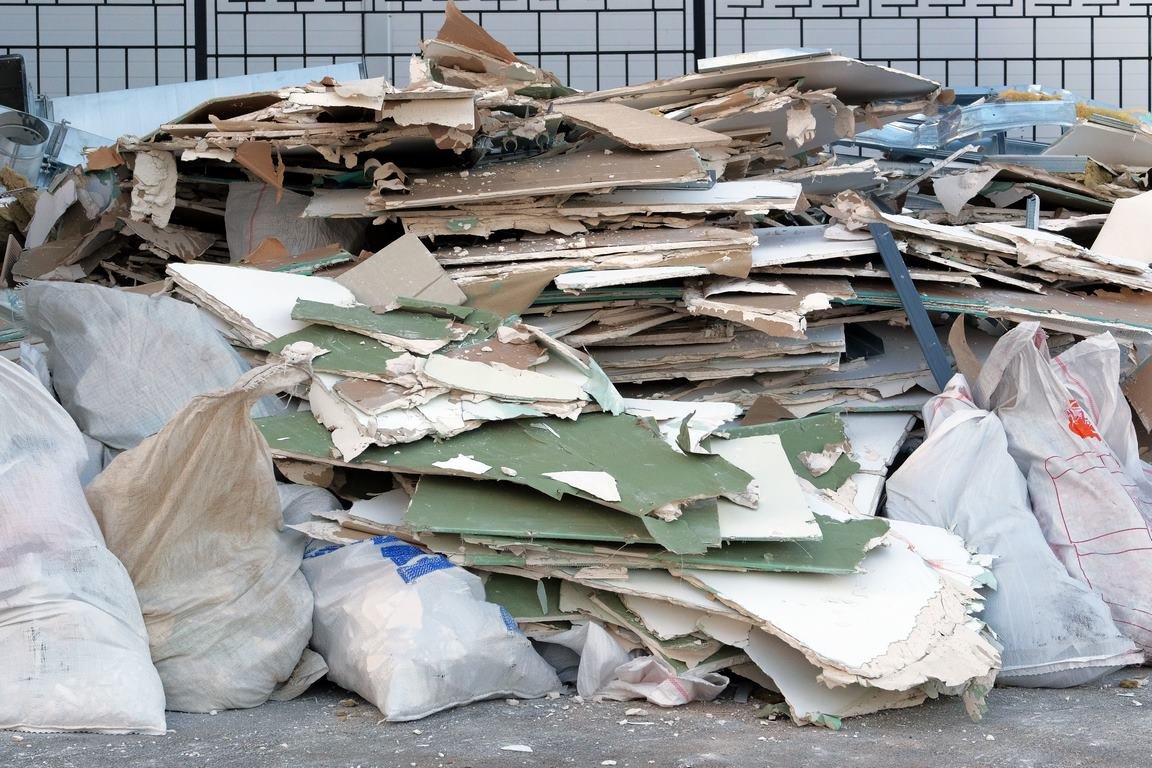Table of Contents Show
Whether you’re renovating your home or are building a new one, the truth is home construction waste is always part of the picture. In fact, due to the massive amount of solid waste from construction, it’s considered one of the major contributors to landfills today.
Some homeowners tend to dispose of these wastes easily by ditching them in a landfill. Doing so is not the most sustainable way because of the landfill insufficiency of today. Not just that, this is very harmful to Mother Nature and the people living close by.

When you resort to this irresponsible practice, you contribute to the environment’s pollution. You might also cause danger to the community’s health due to reckless disposal of hazardous wastes such as cables, adhesives, lead on the paint, solvents, and many more.
On the other hand, if you dispose of your construction wastes responsibly, you’re saving the environment and the community from the possible dangers that garbage might cause.
If you’re planning to renovate or construct your home, here are the four ways to deal with home construction waste.
1. Sort and Salvage
As you start the construction, one of the most fundamental things to do is sort out your building and demolition waste. Sorting out means identifying which ones you should dispose of and which ones you can still recycle.
To effectively do this, you can contact dumpster bin rentals in Toronto or one that’s near your area and label each bin as:
Hazardous Waste
Any item that can cause a hazard should be included in this bin, such as batteries, electronics, paints, solvents, etc.
Non-Hazardous Waste
These are items that won’t cause any danger but can’t be reused.
Reusable Waste
You can include reclaimed wood, old countertops, or anything that you can still reuse for your next project.
For Review
These are items you’re unsure of where to belong.
Gradually disposing of garbage by throwing it straight into the bins will allow you to reduce the mountain pile of garbage and lessen your clean-up time and quick clean-up of your site!
2. Reuse and Recycle
Those belonging to the hazardous and non-hazardous bins should be disposed of properly as soon as you’re done sorting all the construction waste.
You don’t have to be concerned about what to do with those types of trash because reputable services like Toronto bin rental or one in your area are experts on proper waste disposal.
You should sort all those left in the reusable and review bins for the second time. Identify which items are for reuse on your next project. These can be countertops, working light bulbs, doors, etc. Doing this will surely save you a reasonable amount of time and save you from the stress of buying new materials.
Read Also:
3. Donate
If you’re not really sure whether you want to reuse some items, one good option for them is to donate them to somebody who can still make good use of them.
Some of the ways you can do this are:
- By displaying them along the roadside with a card that says it’s free.
- Donating them to charities or organizations that accept items as such.
- Bring them to the local dump’s day fair, where everyone is encouraged to bring in reusable items, whether sold or given away.
By this, you’re not only saving yourself from the hassle of storing them in an area while waiting for the next project, but you’re also making someone else happy. Indeed, your trash can be someone else’s treasure.
4. Resell Them for Cash
If you still have items in good condition, you might want to dispose of them by reselling them for cash. The value may not be as much as how much you bought it before, but you’ll still be able to earn a good amount of money from it.
If you want to resort to this option, you can always post them in some reselling apps available online or in the Facebook marketplace.
Conclusion
Indeed, construction waste materials can be a lot to handle, especially when you don’t know what to do about them.
But, as a responsible community member, you should always make sure to dispose of your building and demolition waste properly. You are not only helping the environment but also those around you.
Proper disposal starts with segregation. Get rid of the hazardous and non-hazardous waste properly, and deal with the reusable items afterward. You can either keep these items for your next project. If that option isn’t possible, you can always donate or resell them for cash.
Though resorting to the easy way of disposal seems tempting, always think of your action’s outcome. Considering the four ways stated above will surely bring you to an environment-friendly, hassle-free, budget-savvy home construction waste disposal.










